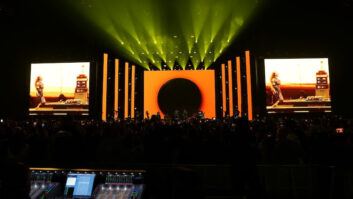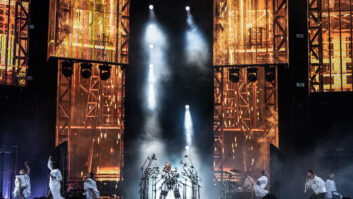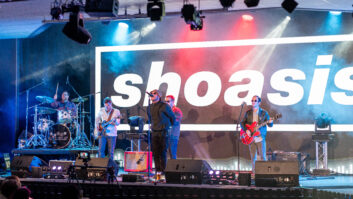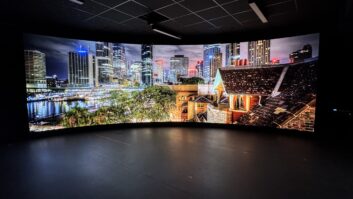The team behind the new West End production of Oklahoma! was recently tasked with creating a captivating and unique stage experience, and turned to the disguise solo server. The creative vision was to use video at critical points during the show, but to do so sparingly and as a surprise element, adding emphasis to key moments to generate a substantial impact.
First performed in 1943, Oklahoma! is a beloved American musical created by the celebrated duo of Rodgers and Hammerstein. Set in early 20th century US frontier territory, the show has captivated audiences for decades with its charming blend of romance, drama and iconic tunes such as “Oh, What a Beautiful Mornin’,” and has been described as one of the most influential musicals ever produced.
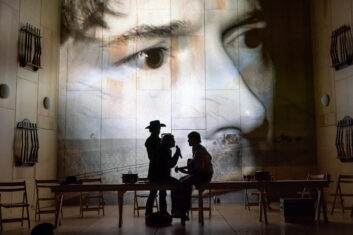 The production team needed to project video onto the entire stage and set, even into the balconies with restricted sightlines. The challenge was to make these projections unnoticeable until they were in use, maintaining the element of surprise.
The production team needed to project video onto the entire stage and set, even into the balconies with restricted sightlines. The challenge was to make these projections unnoticeable until they were in use, maintaining the element of surprise.
Moreover, they had to overcome a significant technical hurdle: implementing video processing chains with live actors singing, which required matching video with audio as precisely as possible. The video content was shot live using wireless handheld infrared cameras operated by the actors, but during each performance had to be delivered with an imperceivable amount of latency in the video processing chain, including wireless cameras and the use of Notch real-time graphics.
In addition, hiding large projectors in small theatre locations was a formidable challenge due to their size and noise. Moreover, the venue’s structure deviated from the available blueprints, further complicating the positioning of these projectors.
To tackle these challenges, the production team turned to the disguise solo server. Designed to bring the power of the disguise suite to smaller productions and experiences within theatre, fixed installs, studio setups and smaller venues, the solo offers the support of a full disguise production suite with the power and performance to meet modern demands.
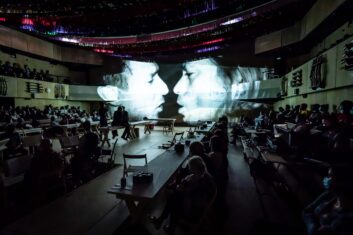 Having been used in previous US versions of the show, disguise’s Designer software was already a tried and trusted solution. It helped overcome the various technical challenges faced by the production team by allowing them to deliver the performance levels required, particularly ensuring that the live actors’ singing matched the video segments with absolute precision.
Having been used in previous US versions of the show, disguise’s Designer software was already a tried and trusted solution. It helped overcome the various technical challenges faced by the production team by allowing them to deliver the performance levels required, particularly ensuring that the live actors’ singing matched the video segments with absolute precision.
As part of the overall solution, the team was able to use Mapping Matter – a projection mapping simulation tool within disguise Cloud – to complete a detailed projector study, allowing the team to hide all projectors in the set, maintaining the surprise element for the audience and avoiding the need to turn them on and off during the show, enhancing reliability.
Using Designer brought significant benefits to the Oklahoma! production. The most critical was ensuring synchronisation between audio and video with an imperceivable amount of latency in video processing. The software allowed the team to create a surprising, captivating stage experience by projecting video content in a precise yet unnoticeable manner until revealed.
The disguise solo server’s capability to handle complex technical requirements, such as powering Notch and projecting video into balconies with poor sightlines, greatly aided in realising the creative vision of the production. Moreover, the software helped the team navigate the challenge of integrating modern projection technology into an old venue structure, maintaining the integrity of the historical theatre venue.
Despite the challenges of restrictive theatre budgets, the production was able to deploy resources effectively, building redundancies into the system such as a completely separate camera rig and backup servers. The production team leader was proud of completing a successful transfer of the show into the West End, describing disguise solo as a “great workhorse,” especially for the theatre.

